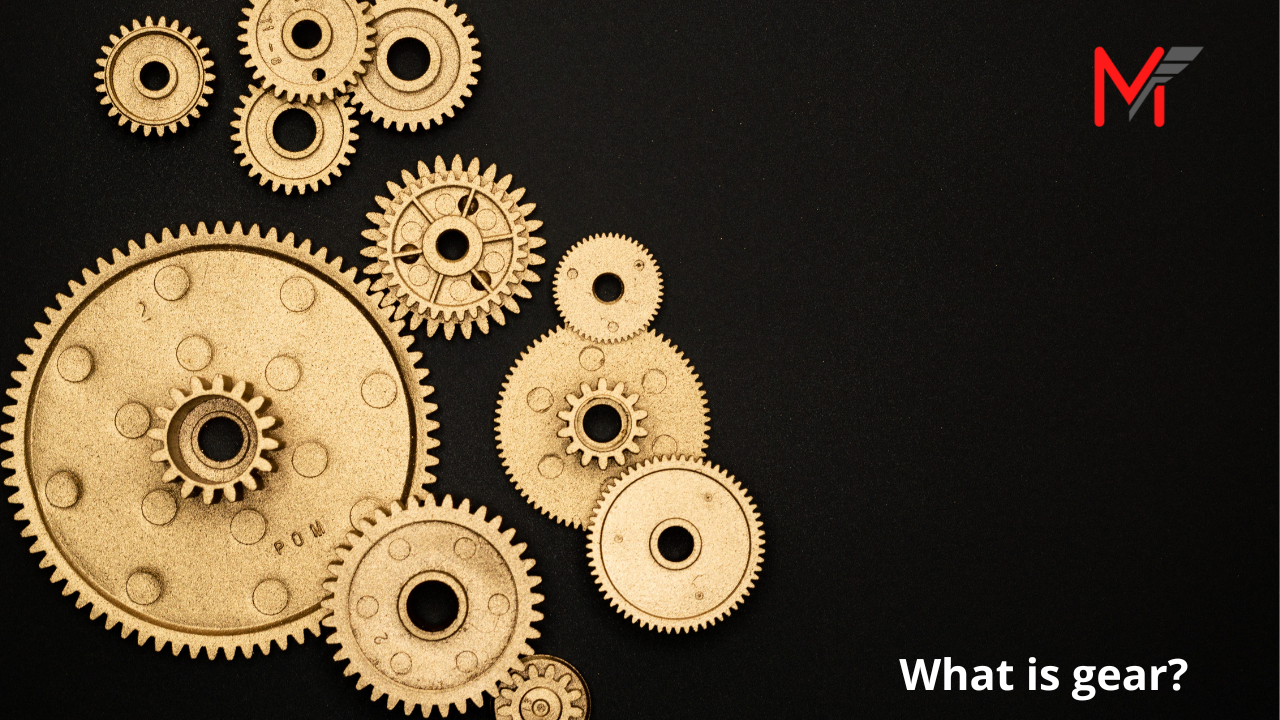
What is Gear?
Introduction:
Gear is a machine component consisting of a toothed wheel attached to a rotating shaft. Gears operate in pairs to transmit and modify rotary motion and torque (turning force) without slip, the teeth of one gear engaging the teeth on a mating gear.
Two or more meshing gears, working in a sequence, are called a gear train or a transmission. The gears in a transmission are analogous to the wheels in a crossed, belt pulley system. An advantage of gears is that the teeth of a gear prevent slippage. In transmissions with multiple gear ratios—such as bicycles, motorcycles, and cars—the term "gear" (e.g., "first gear") refers to a gear ratio rather than an actual physical gear.

History of Gears:
- Early examples of gears date from the 4th century BC in China
- The earliest preserved gears in Europe were found in the Antikythera mechanism, an example of a very early and intricate geared device, designed to calculate astronomical positions. Its time of construction is now estimated between 150 and 100 BC
- Gears appear in works connected to Hero of Alexandria, in Roman Egypt circa AD 50
- 1386 CE: The Salisbury Cathedral clock: it is the world's oldest still working geared mechanical clock.
- 725 CE: The first geared mechanical clocks were built in China.
(Source: Wikipedia)

Why use gear?
1. Gears can transmit power with interconnected gears without causing slippage
2. The gears can adjust the rotating speed by changing the gear ratio.
3. Adjusting the torque can be done by providing a gear.
4. With gear trains, a large velocity ratio is obtained even with minimum space.
5. Transmission of motion over a small center distance of shafts.
6. Mechanically strong enough to lift higher loads.
7. Motion can be transmitted between non-parallel, intersecting shafts.

Disadvantages of Gear drive:
1. They are not suitable for transmitting motion over a large distance.
2. They have no flexibility.
3. Gear operation is noisy.
4. Due to the engagement of the toothed wheel of gears, some part of the machine may get permanently damaged in case of excessive loading.
5. Lubrication is required.

Reasons for Gear Failure:
1. Abrasive wear
2. Corrosive wear
3. Initial pitting
4. Destructive pitting
5. Scoring

Types of Gears:
1. Spur Gear
2. Helical Gear
3. Bevel Gear
4. Worm and Worm Wheel
5. Rack and Pinion
6. Spiral Gear
7. Herringbone Gear.
8. Miter Gear
9. Screw Gear
10. Internal Gear

Application of Gears/Gear Drive:
1. Automobile Gearboxes
2. Conveyors and Elevators
3. Mixer and Blender
4. Bicycle and Mechanical Clocks
5. Motors with gearboxes(EV, Robots,etc)
6. Steering mechanism
7. Shaper, lathe, milling machines
8. Aerospace and Aircraft
9. Factory automation
10. Packaging machine
11. Agricultural machinery
12. Food processing machine
Thank you for reading.
Follow our newsletter Mechanical Engineering by Manufast.in
TM-Professional Engineer
1yAmazing stuff! I am proud to be a Mechanical Engineer
MECHANICAL FITTER at UNIVERSAL MINING AND CHEMICAL INDUSTRIAL LIMITED
1yGreat stuff..